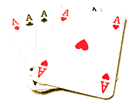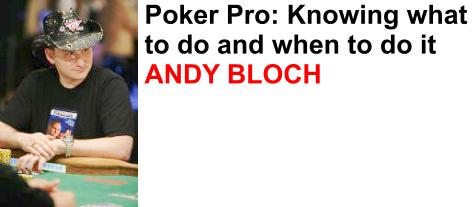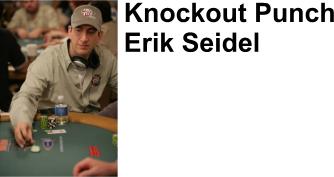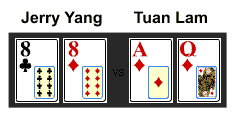Why Play Sit and Go Poker?
 Sit and Go poker tournaments are a fun and exciting way to get your poker fix in a hurry. Since you don’t usually have to pre-apply or find an open date to play, the Sit and Go (“SNG”) is a favorite amongst poker enthusiasts who want to play cards in their spare time.
Sit and Go poker tournaments are a fun and exciting way to get your poker fix in a hurry. Since you don’t usually have to pre-apply or find an open date to play, the Sit and Go (“SNG”) is a favorite amongst poker enthusiasts who want to play cards in their spare time.
Say you get home from work at 5:30 PM (I wish!) and, amazingly, have a night with nothing on the horizon. With the SNG, you can find a table with an open spot, wait for the pre-selected amounts to be filled and try to win yourself a nice dinner for tomorrow. Imagine covering the cost of that Porterhouse steak before eating it!
These SNG online poker tournaments are fast-paced, usually consisting of 10 players, and they’re the best way to build a bankroll with a minimal deposit. It’s important to note that they normally pay the top three finishers out of 10 players and are the only tournaments where you will find 30 percent of the field getting paid (in multi-table tournaments, generally only about 10 percent of the field is paid). SNGs definitely are the best “risk/reward” ratio in online poker.
A good way to play in these SNGs is to employ a “tight aggressive” mentality. While you do face the possibility of seeing some bad beats doing so, those losses can be mitigated if you stay the course. The blinds usually start quite low, so the conservative player will be rewarded down the road. Generally speaking, you can start out tight and then slowly become aggressive with premium hands. Chances are you’re sitting at a table with some causal players who want to make big splashes as well, so bide your time and wrangle them in. One of the staples of a SNG is that people will often pay any price to see a flop, regardless of what cards they’re holding.
Table position will play a big role in how you pull off this strategy, however. In early position, you should only play these strong hands. Later on, however, is your chance to occasionally loosen the reins. Middle-to-late positions are great because you can see what others players might be doing – maybe take a flyer on that low pocket pair or those suited connectors. Really, the middle-to-late positions are great for one thing: getting to see the action. You will get to see what kind of action your opponents take before you have to make a decision, and more importantly, what kind of pot odds you’ll be getting to see a flop.
All strategy aside, though, the real fun of a SNG is the spontaneity. If you’re into tournament-style poker but can’t handle a fixed schedule of events, the SNG is definitely the way to go. Blind structures encourage casual players and novices to get their feet wet in the world of online poker, which means anybody and everybody is truly welcome.
![]() Looking for online poker tournaments? Check out bet365 Poker – Having played at bet365 Poker for years, we really enjoy and recommend them highly. bet365 is the lead member of the Playtech iPoker Network. Sorry, no US-based players can be members.
Looking for online poker tournaments? Check out bet365 Poker – Having played at bet365 Poker for years, we really enjoy and recommend them highly. bet365 is the lead member of the Playtech iPoker Network. Sorry, no US-based players can be members.
![]() American poker players should visit BetOnline Poker (Chico Poker Network – Boutique-style poker – very stylish with some great play features. Players from around the world including most USA residents welcome)
American poker players should visit BetOnline Poker (Chico Poker Network – Boutique-style poker – very stylish with some great play features. Players from around the world including most USA residents welcome)




 Hand 133 – Crucial hand 7 – Biggest Hand So Far – Busting the Defending Champ
Hand 133 – Crucial hand 7 – Biggest Hand So Far – Busting the Defending Champ
 A US-based Professional Poker player, Jordan has over $1 million in career earnings including 2 WSOP Final Tables and 8 WSOP cash finishes. (So don’t get suckered in with the “lucky” bit in his online moniker!)
A US-based Professional Poker player, Jordan has over $1 million in career earnings including 2 WSOP Final Tables and 8 WSOP cash finishes. (So don’t get suckered in with the “lucky” bit in his online moniker!)


 Jerry Yang had been chip leader since early in the day, when it got to heads up play he had a 5-1 chip lead over his opponent Tuan Lam.
Jerry Yang had been chip leader since early in the day, when it got to heads up play he had a 5-1 chip lead over his opponent Tuan Lam.